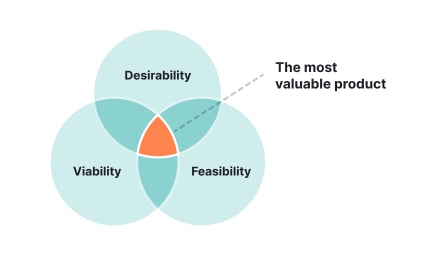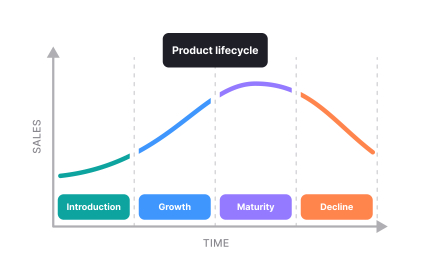Product Positioning
Product positioning defines how a product is perceived in the market, showing how it solves user problems better than alternatives.
Product Positioning
What is Product Positioning?
Customers don't understand what makes your product different from alternatives, leading to price-based competition and confused market perception about your unique value. You've probably struggled to explain why someone should choose your solution when competitors seem to offer similar capabilities.
Most companies position products based on features rather than customer value perception, missing opportunities to differentiate through meaningful benefits that matter to target audiences.
Product positioning is the strategic process of defining how your product should be perceived relative to alternatives in the minds of target customers, establishing a unique market position based on specific customer needs, competitive advantages, and value propositions that drive preference and purchase decisions.
Strong product positioning can increase conversion rates by 30-50%, reduce customer acquisition costs by 25%, and command premium pricing because customers clearly understand unique value rather than viewing products as commoditized alternatives.
Think about how Tesla positioned electric vehicles as premium performance cars rather than environmental compromises, or how Apple positioned computers as creative tools rather than just business machines, creating entirely new market categories.
Why Product Positioning Matters for Market Success
Your product gets lost in crowded markets because customers can't distinguish your unique value from competitor offerings, leading to price competition and reduced market share despite superior capabilities.
The cost of poor positioning accumulates across every customer interaction. You compete on price instead of value, lose deals to inferior but better-positioned alternatives, and struggle to communicate why customers should pay premium prices for your solution.
What strategic product positioning delivers:
Clear competitive differentiation that helps customers immediately understand why your product is the best choice for their specific needs rather than just another option to evaluate.
When positioning is clear, customers can quickly determine if your product is right for them instead of needing extensive education about capabilities and benefits.
Premium pricing opportunities because strong positioning emphasizes unique value that justifies higher prices rather than positioning your product as a commodity competing primarily on cost.
Faster sales cycles as positioning clarity helps prospects make confident decisions more quickly rather than getting stuck in analysis paralysis comparing similar-seeming alternatives.
Better market focus by identifying specific customer segments and use cases where your product delivers superior value rather than trying to appeal to everyone.
Stronger brand loyalty because clear positioning creates emotional connections and rational justifications that make customers less likely to switch to competitors.
Advanced Product Positioning Strategies
Once you've established basic positioning foundations, implement sophisticated market differentiation and category creation approaches.
Category Creation: Develop positioning that establishes new market categories where your product can be the obvious leader rather than competing in established categories dominated by incumbents.
Emotional Positioning: Connect rational product benefits to emotional customer outcomes and aspirations that create stronger purchase motivation than feature-based differentiation alone.
Segment-Specific Positioning: Develop positioning variations for different customer segments while maintaining consistent core brand identity and value propositions.
Competitive Repositioning: Position competitors in ways that highlight your advantages while acknowledging their strengths in areas that matter less to your target customers.
Recommended resources
Courses

Introduction to Product Management

Product Discovery

Product Analytics
Lessons

Core Responsibilities of a Product Manager

Your Product Vision and Strategy






